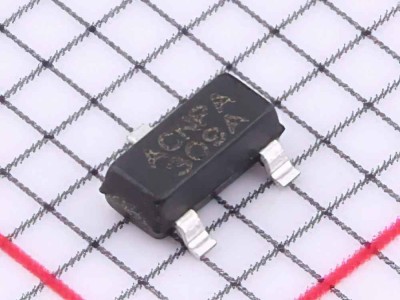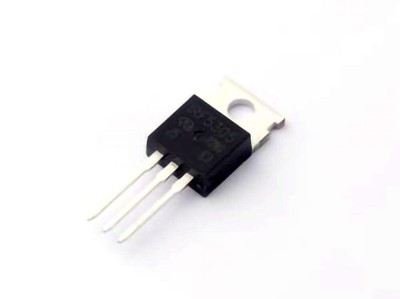
In this comprehensive guide, we explore the MP1584 DC-DC buck converter module , focusing on its application in Power supply circuits and methods for optimizing efficiency. The MP1584 is a highly versatile and compact step-down voltage regulator ideal for powering devices that require lower voltage from a higher input. Learn how to maximize its performance through careful design, component selection, and best practices for achieving optimal energy efficiency in various use cases.
MP1584, DC-DC buck converter, power supply, efficiency optimization, voltage regulator, step-down converter, power efficiency, energy optimization, electronics, power management.
Introduction to the MP1584 DC-DC Buck Module and Its Applications
Understanding the MP1584 DC-DC Buck Module
The MP1584 is a popular, compact DC-DC buck converter that provides efficient voltage regulation for a variety of applications. A DC-DC buck converter is designed to convert a higher input voltage into a lower output voltage, making it ideal for powering circuits that require a stable, lower voltage. In its most common use cases, the MP1584 can take input voltages from 4.5V to 28V and provide output voltages as low as 0.8V, with an output current of up to 3A.
What sets the MP1584 apart from other converters is its combination of efficiency, size, and cost-effectiveness, making it an excellent choice for a wide range of applications, from powering Arduino projects and Raspberry Pi devices to powering more complex electronics like Communication devices, battery-powered systems, and portable gadgets.
Key Features of the MP1584
The MP1584 boasts several key features that make it an attractive option for engineers and hobbyists alike:
High Efficiency: With up to 96% efficiency, the MP1584 ensures minimal energy loss, allowing for longer battery life and reducing heat generation.
Wide Input Voltage Range: The module supports input voltages from 4.5V to 28V, making it versatile enough to handle various power sources, including USB, batteries, or standard power adapters.
Adjustable Output Voltage: The output voltage can be fine-tuned using an external resistor divider, offering flexibility in powering a wide array of devices.
Compact Design: The small form factor of the MP1584 makes it suitable for compact designs and space-constrained applications.
Overcurrent and Overtemperature Protection: The built-in protections ensure the module operates safely, even under extreme conditions.
Applications of the MP1584
The MP1584 is used in a wide range of applications where efficient voltage conversion is crucial. Below are some key areas where this module excels:
Battery-Powered Systems: The MP1584 is commonly used in portable electronics, where a battery needs to supply power to a device that operates at a lower voltage. This includes devices such as handheld tools, wireless sensors, and mobile phones.
Power Supply for Microcontrollers and Development Boards : The MP1584 is ideal for powering microcontroller-based projects, including Arduino, Raspberry Pi, and ESP32 boards, which typically require 5V or 3.3V from a higher voltage source.
LED Drivers : Due to its ability to efficiently step down voltages, the MP1584 is also used to power LED strips or arrays, which require a stable voltage for optimal brightness and longevity.
Communication Devices: Devices such as wireless transceiver s, Bluetooth modules, and GPS receivers often require precise voltage regulation to ensure reliable performance.
Automotive and Industrial Applications: In automotive systems, where the input voltage can vary from 12V to 24V, the MP1584 ensures a steady output to power smaller subsystems, sensors, and controllers.
The Need for Efficiency in Power Conversion
One of the critical considerations when selecting a DC-DC converter for any application is efficiency. High-efficiency converters reduce the amount of wasted energy, translating to lower operating costs, less heat dissipation, and longer operational lifetimes for your components. The MP1584, with its 96% efficiency, significantly reduces the amount of power that is lost during conversion, which is especially important in battery-powered applications where every bit of power counts.
Additionally, efficient power conversion helps reduce the thermal load on the system, which in turn reduces the need for cooling mechanisms such as heat sinks or fans, making the MP1584 an excellent choice for space-constrained and portable devices.
Efficiency Optimization Strategies for the MP1584 DC-DC Buck Module
Factors Affecting Efficiency in the MP1584
While the MP1584 is designed to be highly efficient, there are several factors that can influence its performance and efficiency in a given application. Understanding these factors and optimizing them can further enhance the performance of your power supply system.
1. Input Voltage Range
The input voltage plays a significant role in determining the efficiency of the buck converter. The MP1584 achieves its maximum efficiency when the difference between the input and output voltages is as small as possible. When the input voltage is significantly higher than the output voltage, the converter has to work harder to step down the voltage, which may lead to higher losses and reduced efficiency.
Optimization Tip: Select an input voltage that is as close as possible to the required output voltage to minimize the conversion loss. Additionally, ensure that the power source can supply a stable voltage across the input range for optimal operation.
2. Output Voltage Selection
The output voltage also impacts efficiency. The MP1584 can deliver adjustable output voltages, but the efficiency may vary slightly depending on the chosen output voltage. The higher the output voltage relative to the input voltage, the more efficient the conversion process tends to be.
Optimization Tip: Choose an output voltage that balances your device's power requirements and the efficiency curve of the MP1584. Avoid setting output voltages that are too close to the input, as this may lead to diminishing returns in terms of efficiency.
3. Inductor Selection
The inductor is a critical component in the buck converter, and its quality and value can affect the efficiency of the converter. A poor-quality inductor with high Resistance or improper inductance may lead to higher losses and reduced efficiency. The MP1584 module typically uses an external inductor, and its selection should match the recommended specifications to achieve optimal performance.
Optimization Tip: Use an inductor with low DC resistance (DCR) and an appropriate value of inductance (typically 33µH to 47µH for the MP1584). A higher-quality inductor will reduce power losses and increase efficiency.
4. capacitor Selection
Capacitors are used in the input and output stages of the MP1584 to smooth out voltage ripples and improve stability. Low-quality capacitors with high ESR (Equivalent Series Resistance) can lead to higher ripple and reduced efficiency.
Optimization Tip: Choose low-ESR capacitors with the recommended values for the input and output capacitors (typically 330µF for the input and 470µF for the output). Using high-quality ceramic or tantalum capacitors can improve overall efficiency and performance.
5. Switching Frequency
The MP1584 operates using a high-frequency switching technique to step down the voltage. However, the switching frequency can have an impact on both efficiency and heat dissipation. A higher switching frequency can result in smaller passive components, but it may also lead to higher switching losses.
Optimization Tip: Select a switching frequency that balances the size of external components with efficiency. The MP1584 typically operates around 1.5MHz, but tuning the frequency to match the load requirements can improve efficiency in specific applications.
6. PCB Layout Considerations
The design of the printed circuit board (PCB) plays a crucial role in minimizing parasitic inductance and resistance, which can degrade efficiency. Improper PCB layout can introduce noise, reduce the stability of the voltage output, and increase losses.
Optimization Tip: Ensure that the PCB layout follows best practices, such as keeping the ground plane continuous, minimizing the trace lengths for high-current paths, and using proper decoupling capacitors near the IC pins. A well-designed PCB will reduce losses and improve overall efficiency.
Advanced Efficiency Techniques
For more advanced applications where even higher efficiency is required, consider these additional optimization techniques:
1. Use of Synchronous Rectification
Synchronous rectification uses MOSFETs instead of diodes for the output rectification stage, reducing conduction losses. Although the MP1584 doesn't inherently support synchronous rectification, choosing a similar synchronous buck converter or modifying the circuit to use MOSFETs can improve efficiency.
2. Power Mode Optimization
Some power converters, including the MP1584, feature a power-saving mode or pulse-width modulation (PWM) mode, which can be adjusted to optimize performance under various load conditions. Switching between different modes based on the load can significantly reduce power loss in low-load conditions.
Conclusion
The MP1584 DC-DC buck converter is a versatile and highly efficient module suitable for a wide range of applications, from microcontroller projects to industrial devices. By understanding the factors that affect efficiency and implementing optimization strategies, you can maximize the performance of the MP1584 in your specific application. Whether you're designing a portable power supply, powering sensors, or creating energy-efficient embedded systems, the MP1584 offers an excellent balance of cost, efficiency, and ease of use. By carefully selecting components, optimizing the layout, and adjusting key parameters, you can ensure that your power supply is as efficient as possible, resulting in a longer battery life, lower heat generation, and more reliable performance for your electronics.
If you are looking for more information on commonly used Electronic Components Models or about Electronic Components Product Catalog datasheets, compile all purchasing and CAD information into one place.


